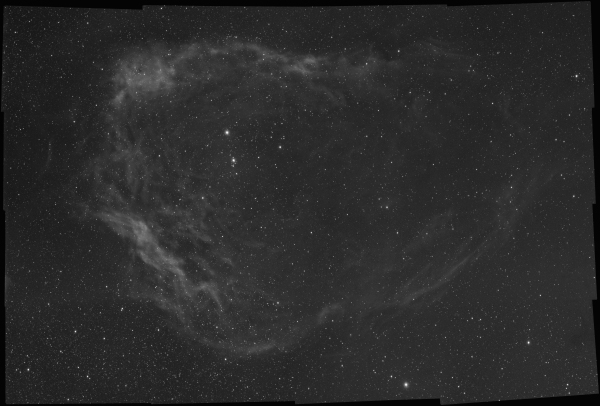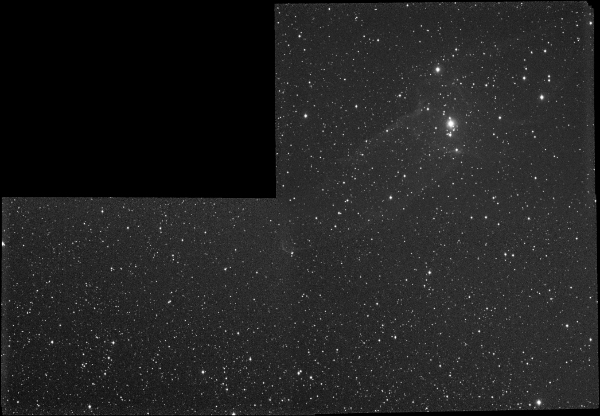SH2-129
Emission Nebula in Cepheus
RA: 21h 12m 25.9s Dec: +58° 33' 46", Distance: ~2300 ly, Size: ~100 ly
Sh2-129, also known as the Flying Bat Nebula is an emission nebula located in the constellation Cepheus and is at a distance of approximately 2300 light years. Seen within SH2-129 is the teal colored 'Squid' nebula (OIII signal) called OU4 and was discovered by French amateur astrophotographer Nicolas Outters in 2011. Because OU4 is very faint, it has gone undetected and can only been seen with a narrow band oxygen filter. Sh2-129 at a distance of about 2,300 light years in the constellation Cepheus.
OU4 is believed to be a bipolar outflow originating from the triple star system, HR8119 (shown in the mouse over image), which is the bright star in the center of the nebula.
Per Wikipedia;
A bipolar outflow comprises two continuous flows of gas from the poles of a star. Bipolar outflows may be associated with protostars (young, forming stars), or with evolved post-AGB stars (often in the form of bipolar nebulae).
The 16 mosaic panels were laid out using Sequence Generator Pro's mosaic planner and utilized a 10% overlap to assemble. The SH2-129 nebula structure was taken with a 5 nm Baader Hydrogen Alpha narrow band filter. The 'Squid' nebula (OU4) was taken with a 5nm Oxygen filter using only 3 frames that capture the faint structure. Astro Pixel Processor aligned the panels and Photoshop was used to carefully blend OU4 into the Sh2-129. Being a narrow band image, the star colors are not accurate.
Mouse over image to scale the size to moon & to show HR8119
Click on image for larger size
SH2-129 in Hydrogen Alpha (Ha) initial stretch
42.6 hours total exposure time
SH2-129 in Oxygen (OIII) initial stretch
10.5 hours total exposure time
Not to scale
© 2021 Michael A. Siniscalchi
Mosaic matrix generated by Sequence Generator Pro to plot frame capture.
Each panel has a 10% overlap



